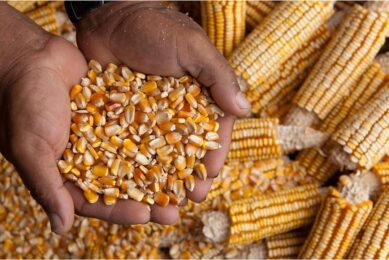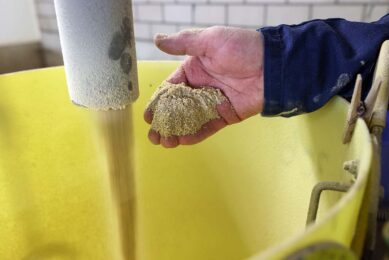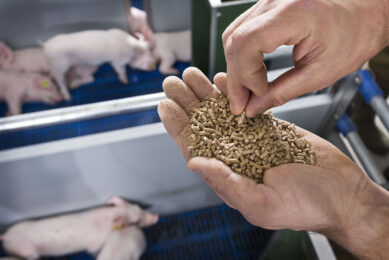Fishmeal’s X-factor
For a number of reasons (low fish stocks, high demand, marketing), fishmeal has become quite expensive; in my opinion, too expensive to be used without hesitation in piglet diets.
For a number of reasons (low fish stocks, high demand, marketing), fishmeal has become quite expensive; in my opinion, too expensive to be used without hesitation in piglet diets.
It is no secret that today most nutritionists are actively looking into potential alternatives to keep the price of their products competitive in the feed market. The same applies for home-mixed feeds, as any and all increases in ingredient prices invariably lead to reduced profitability.
But, before we examine any fishmeal alternatives, it is imperative to understand the reasons why fishmeal is included in piglet diets in the first place. First, I must state that I don’t believe fishmeal is an ingredient that can or should not be replaced, as its properties are easily found in other ingredients.
In other words, there is no secret Factor X in fishmeal (at least none that has been documented so far!). Undoubtedly, fishmeal is an excellent source of protein, both well balanced and highly digestible. This is well documented.
Palatability factor
When used in relatively high levels (8-12%), fishmeal also imparts a certain taste/flavour to diets that piglets find attractive. Thus, the palatability factor with the associated increased feed intake usually observed with fishmeal-based diets!
Now, let’s consider how we could possibly replace these two features of fishmeal. To begin with, it is logical to assume that other animal protein sources of equally high quality (meat meal, poultry meal, milk proteins) should be able to replace fishmeal on an iso-nutrient basis.
Fishmeal substitutes
Indeed, when quality is similar such products are valid fishmeal substitutes. The key word here is quality, as variability in such ingredients is enormous. Unfortunately, animal proteins can be either too expensive and/or prohibited in certain parts of the world. Thus, the next source of highly digestible proteins should be sought after from plant sources.
Here, ingredients such as soy proteins, wheat gluten, potato protein, rice protein, and most other high-protein (over 50-60% CP) ingredients can be of use. One should be aware, however, that some vegetable proteins contain certain anti-nutritional factors that actually inhibit animal performance. Here quality is also important.
In addition, most of these vegetable proteins are not always as balanced as fishmeal and thus addition of crystalline amino acids is often required. The latter can also be used in increased amounts to offset some of the fishmeal amino acids/protein.
Amino acid balance
For most piglet diets, an upper limit in lysine at 0.5% is considered quite acceptable. Quite logically, one would also consider lowering the overall amino acid specifications of certain diets (especially those using high levels of fishmeal) to reduce the need for overall protein in the diet. This suggestion assumes that most piglet diets are usually over-fortified with amino acids.
To close, the palatability factor often attributed to fishmeal is more of importance in low-quality piglet feeds that may often contain foul smelling/tasting ingredients (cheap, off-quality by-products). When the formula contains a number of high-quality and palatable ingredients (such as animal plasma, cooked cereals, extruded soybeans, sugar, whey, etc) the need to further enhance its palatability is questionable at best. Adding fish oil in piglet diets to confer the aroma/taste of fishmeal is an untested practice with more marketing appeal than any sound nutritional basis.
In conclusion, although fishmeal is a useful ingredient for piglet feeds, current prices have clearly driven it out of most such products, with the benefit of discovering suitable alternatives!
Join 18,000+ subscribers
Subscribe to our newsletter to stay updated about all the need-to-know content in the pigsector, three times a week. Beheer
Beheer










 WP Admin
WP Admin  Bewerk bericht
Bewerk bericht